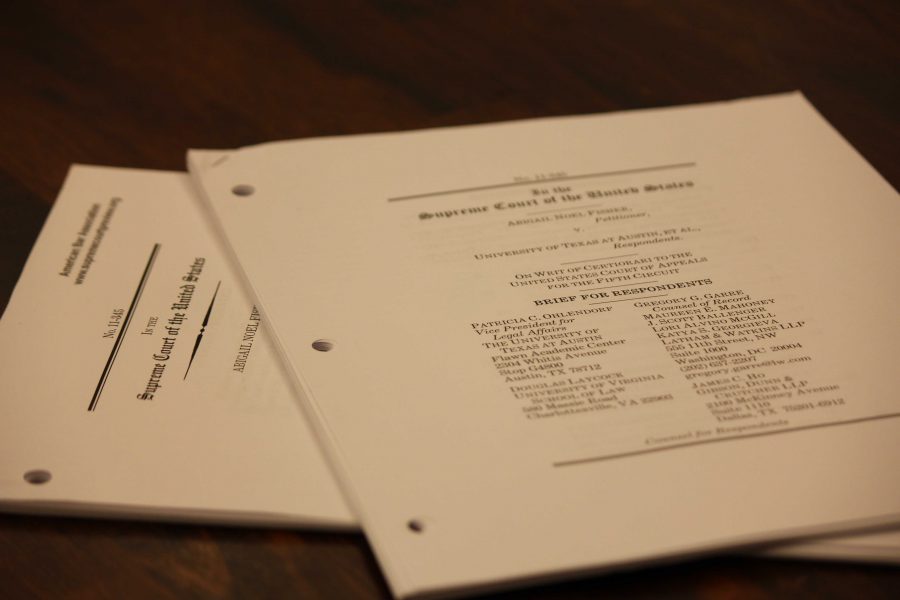High school seniors across America are applying to colleges, and among the many questions that they struggle with is that of racial affiliation. If one is one-sixteenth Native American, can he or she check the box? Will it help, or might it even hurt?
The Supreme Court debated whether future seniors would have to ask themselves these questions Wednesday, Oct. 10, when they heard oral arguments for Fisher v. University of Texas at Austin.
The case will determine the constitutionality of affirmative action, which is designed to promote educational diversity in public schools, and the Court’s decision might drastically change future admissions policies. Here are a few facts from the case briefs and justice opinions.
The Issue
Abigail Fisher, a white Texas resident who applied to and was rejected from UT, sued the university on the grounds that she would have been accepted but for their affirmative action program, which she alleged admitted minorities less qualified than she.
The case has now wound its way to the Supreme Court. The Court is examining whether the use of race in admissions is a violation of the 14th Amendment, whose equal protection clause outlaws discrimination on the basis of race.
For affirmative action to be deemed constitutional, it needs to pass the two criterion of “strict scrutiny.” According to previous Supreme Court rulings, the use of race has to be both a “compelling state interest” and “narrowly tailored.”
So, what does that mean?
In order for affirmative action to be deemed a compelling state interest, it need to further a pressing issue to Americans. In this case, UT’s lawyers will argue that affirmative action helps create educational diversity, which was cited and accepted as a compelling state interest in previous affirmative action cases.
The difficulty of this case lies in the “narrowly tailored” part. In order to be narrowly tailored, UT’s policies cannot use race as a determining factor in the admission of students.
Past Cases
Affirmative action has been a hot-button issue since it first landed on the Supreme Court’s desk in 1978, and Fisher v. UT is the latest in a string of Court decisions on the topic.
The Court’s 1978 decision in Bakke v. UC Davis outlawed using affirmative action to “right past wrongs,” adding that while educational diversity was a compelling state interest, racial quotas of any type were unconstitutional. This ruling was upheld in 2003 with Gratz v. Bollinger.
Gratz v. Bollinger was not the only affirmative action case the Supreme Court ruled on in 2003. It was handled along with Grutter v. Bollinger, which established that race could be used as a factor in admissions as long as it was considered as a factor in many intended to give admissions officers a “contextual” view of applicants.
The Implications
In order for the University of Texas at Austin to pass strict scrutiny, it has to establish both that its policies promote educational diversity and that they do so in a way that race cannot possibly be misused as a factor.
And what if it doesn’t?
The Supreme Court can do one of several things. It can strike down UT’s use of race in admissions using standards from previous cases or revise existing standards in light of UT.
On the more drastic side, the Supreme Court can even decide that race should not be a factor at all, thereby outlawing affirmative action at its core. Depending upon what the Court decides, admission to public schools may undergo changes ranging in scope from redefining how far affirmative action reaches to removing affirmative action programs altogether.







